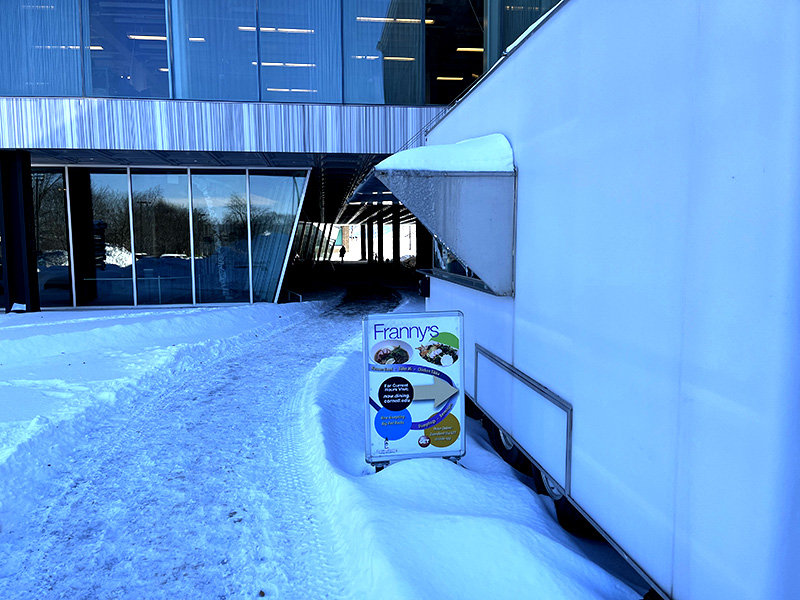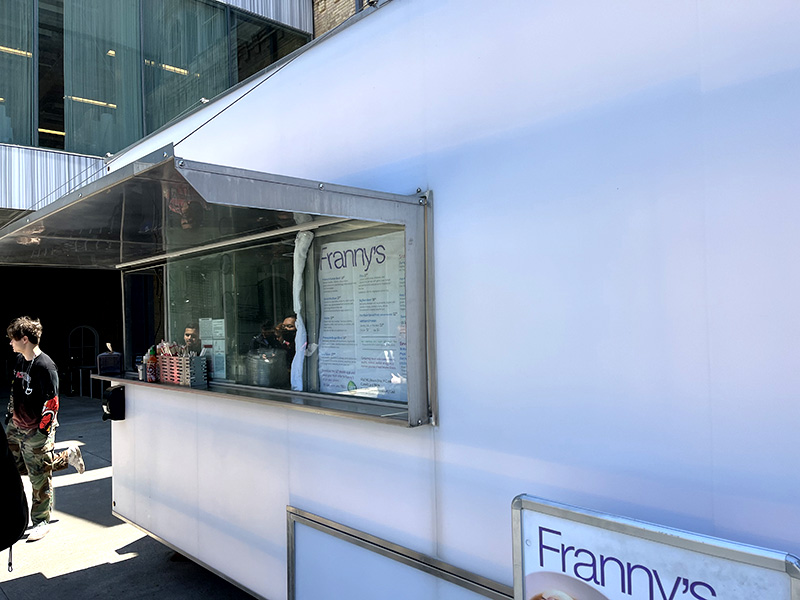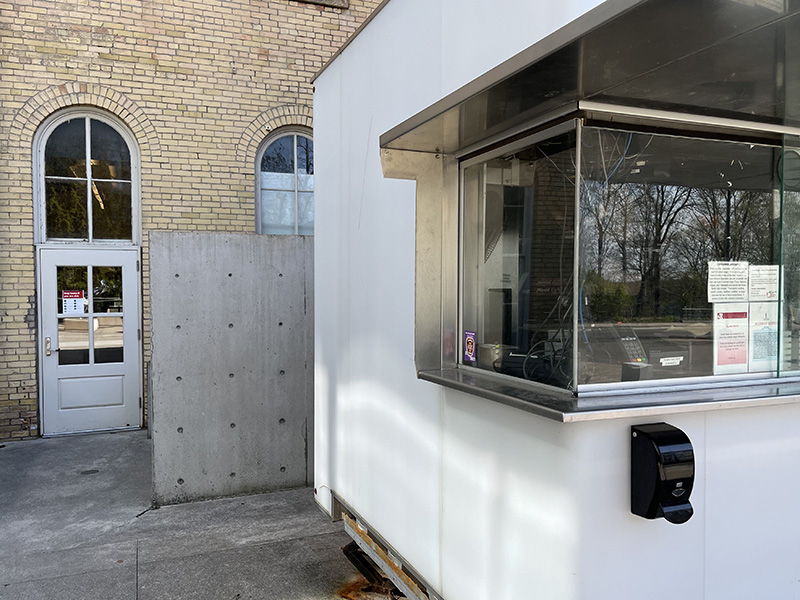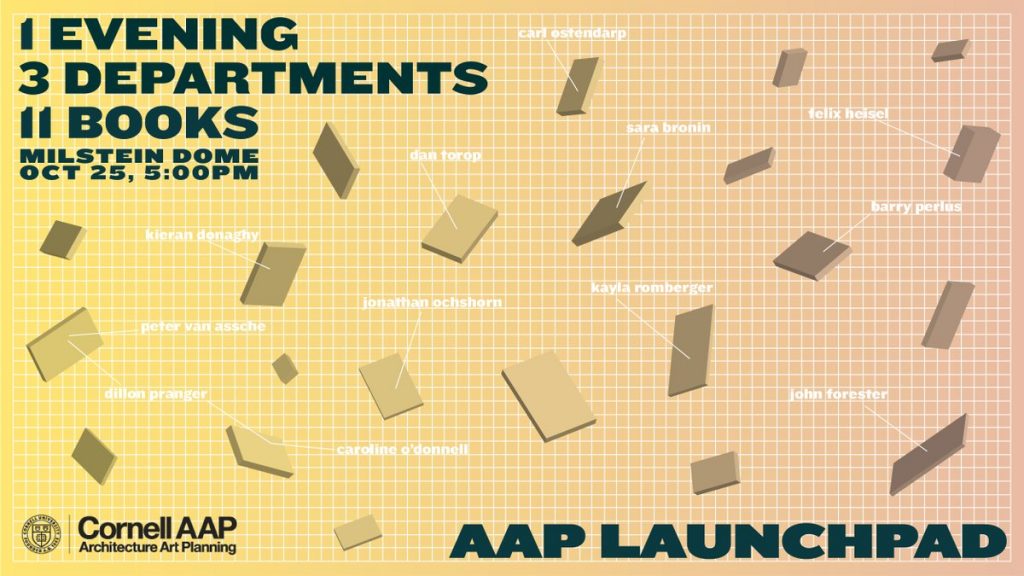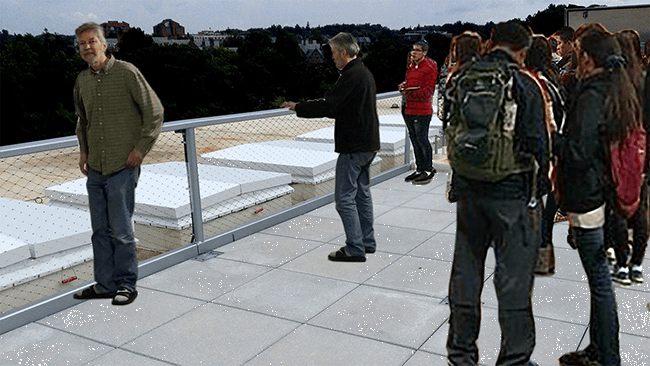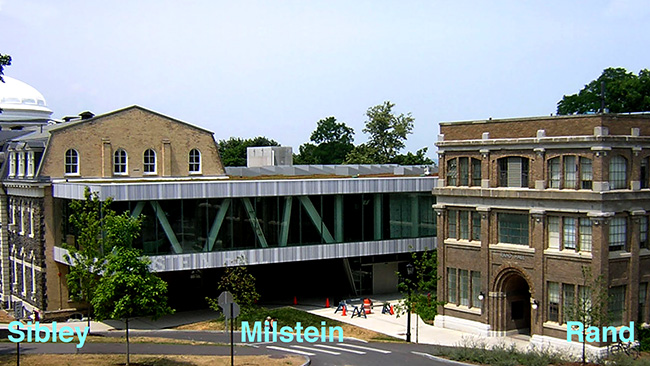[Updated May 5, 2022 (scroll to bottom)] Two years ago, I wrote to administrators at Cornell University, advising them that “protruding objects” designed into a food truck behind Milstein and Sibley Halls were in violation of the ADA as well as the New York State Building Code.
The United States Access Board states: “To prevent hazards to people with vision impairments, the standards limit the projection of objects into circulation paths. These requirements apply to all circulation paths and are not limited to accessible routes. Circulation paths include interior and exterior walks, paths, hallways, courtyards, elevators, platform lifts, ramps, stairways, and landings.”
The New York State Building Code requires that “At least one accessible route within the site shall be provided from public transportation stops, accessible parking, accessible passenger loading zones, and public streets or sidewalks to the accessible building entrance served.” Chapter 10 (Means of egress) states that “Protruding objects on circulation paths shall comply with the requirements of Sections 1003.3.1 through 1003.23.4” and Section 1003.3.3 confirms that “Objects with leading edges more than 27 inches (685 mm) and not more than 80 inches (2030 mm) above the floor shall not project horizontally more than 4 inches (102 mm) into the circulation path.” Circulation path is defined in Chapter 2 of the Code as “An exterior or interior way of passage from one place to another for pedestrians.”

This image shows the protruding objects in the circulation path by the food truck behind Sibley/Milstein Halls at Cornell (photo and annotations by J. Ochshorn)
On the two-year anniversary of my first email, I again requested that Cornell remediate this illegal and dangerous situation, embedding several annotated photographs into my Jan. 14, 2022 email that illustrate one possible method of permanently fixing this problem:

Metal “fins” attached to the food truck behind Milstein/Sibley Halls at Cornell University could be altered to comply with ADA requirements.

Metal “fins” on the food truck could be cut in order to comply with ADA guidelines for protruding objects.

“Before” and “after” images showing proposed remediation of protruding objects on food truck behind Milstein/Sibley Halls at Cornell University (photos and Photoshopping by J. Ochshorn).
[May 5, 2022 Update] Soon after my January 14, 2022, email, a moveable sign was placed under one of the noncompliant protruding fins (image below), something clearly inadequate, since the sign could be (and was) moved from its intended position. I complained about the inadequacy of this remedy.
Amazingly, a few months later — about 4 months after my January 2022 design suggestions and more than two years after my initial complaint — I discovered that the noncompliant metal fins had been trimmed, pretty much as I had specified in my photoshopped renderings: the newly-compliant food truck is shown below.

